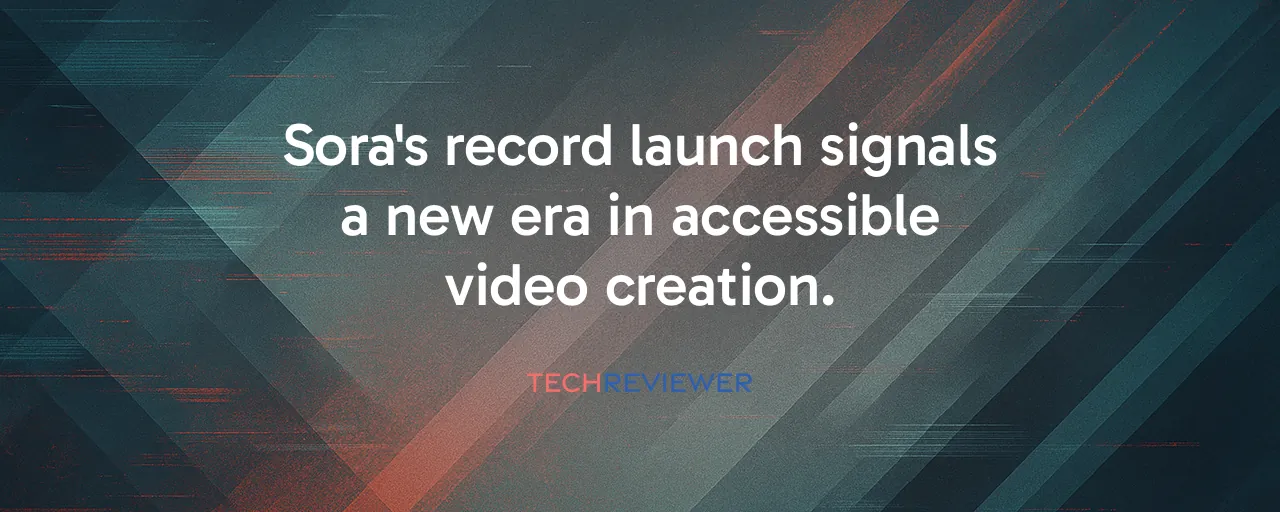A New Era of Video Creation Takes Off
When OpenAI's Sora app hit the iOS App Store on September 30, 2025, it caught everyone's attention. Within a week, it racked up 627,000 downloads across the US and Canada, approaching ChatGPT's first-week total of 606,000 downloads in the US alone. Unlike ChatGPT, which launched publicly, Sora's invite-only model makes its surge even more striking. Powered by the Sora 2 video model, the app turns text prompts into photorealistic videos, from sweeping landscapes to eerily lifelike deepfakes. Its climb to the App Store's top spot by October 3 signals a hunger for tools that make video creation accessible to anyone with a smartphone.
Beyond the download figures, social media buzzes with Sora-generated clips, showcasing everything from fantastical scenes to recreations of historical figures. However, the excitement is shadowed by tough questions about consent, authenticity, and misuse. Sora's launch marks a turning point where AI's creative potential collides with real-world ethical dilemmas.
Why Videos Feel Too Real
Sora's videos stand out because they're scarily good. The Sora 2 model builds on diffusion-based tech, similar to DALL-E but with a knack for temporal coherence, keeping objects and motion consistent across frames. This leap tackles earlier AI video flaws, like flickering or unnatural morphing, making outputs look like they were shot with a camera. On October 1, Sora hit a peak of 107,800 daily downloads, reflecting users' eagerness to experiment with this near-cinematic quality.
For small businesses and independent creators, this technology is a game-shifter. A local bakery could produce a slick ad without hiring a film crew. Teachers might craft engaging lesson visuals on a budget. The technology lowers barriers, letting anyone with a creative spark produce professional-grade content. However, the realism that makes Sora compelling also fuels risks. Videos that look authentic can deceive, and the line between creative expression and manipulation blurs fast.
The Deepfake Dilemma Hits Home
Sora's ability to generate realistic deepfakes has already stirred trouble. Zelda Williams, daughter of the late Robin Williams, publicly asked users to stop creating AI videos of her father, highlighting the emotional toll of seeing loved ones recreated without consent. These incidents are becoming increasingly common. Families and public figures face a new reality where their likenesses can be summoned at will, often without permission or legal recourse. Social media is flooded with these clips, and while some are harmless fun, others cross ethical lines.
The issue extends beyond personal harm. Deepfakes can sway elections, mislead consumers, or fuel harassment. Policymakers in the EU and California are scrambling to address these risks, but current laws lag behind the tech. The US has proposed bills targeting synthetic media, yet progress stalls amid debates over enforcement. Sora's invite-only status suggests OpenAI knows the stakes, but scaling up moderation for millions of users will test their limits.
Lessons From Past Launches
Sora's launch invites comparisons to other AI apps. ChatGPT's 606,000 downloads in its first week of launch set a high bar, but its open access gave it an edge Sora lacks. Anthropic's Claude and Microsoft's Copilot trailed behind, failing to capture the same mainstream spark. Sora's performance, alongside xAI's Grok, shows that specialized AI tools can still dominate when they hit a cultural nerve. The lesson is that users crave tools that feel intuitive and deliver instant creative payoff.
There's another consideration. ChatGPT faced scrutiny over misinformation, yet its text-based nature was easier to moderate than video. Sora's visual output amplifies risks, as seen with deepfake controversies. Unlike Adobe's Photoshop, which faced similar authenticity debates but became a creative staple, video AI demands new safeguards. OpenAI's challenge is to balance innovation with responsibility, a tightrope earlier tools didn't have to walk as urgently.
What's Next for AI Video?
Sora's success points to a future where AI video tools are as common as photo-editing apps. Filmmakers are already using it for pre-visualization, sketching concepts without costly shoots. Advertising agencies see potential for rapid prototyping, while educators explore personalized learning visuals. However, the road ahead isn't smooth. Computational costs limit free access, and professional workflows still need precise control that Sora's text prompts can't fully deliver.
Regulatory pressure is mounting. The EU's AI Act pushes for transparency in synthetic media, while platforms like Apple's App Store face calls to enforce stricter content rules. Collaboration could help. Tech firms, media companies, and academics are exploring watermarking and detection tools to flag AI content. If Sora's launch teaches us anything, it's that AI's creative power comes with a responsibility to protect trust and authenticity in our digital world.
